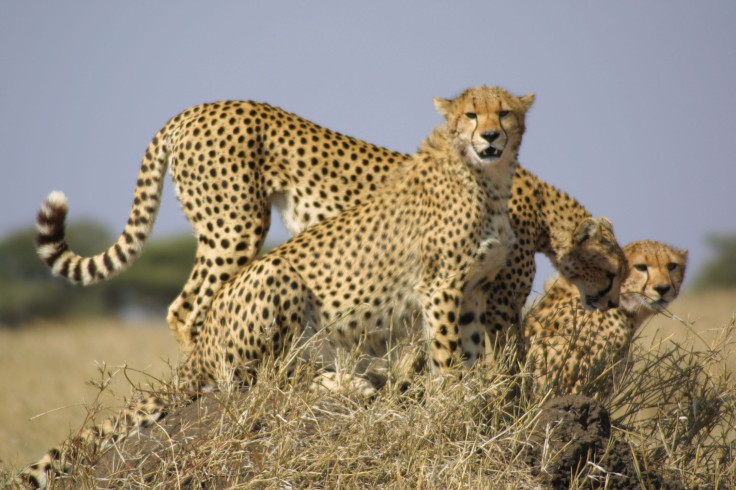Cheetah Facing Extinction As Population Drops, Experts Call For ‘Endangered’ Listing In IUCN Red List

It may be the fastest land mammal but that doesn’t mean the cheetah can outrun extinction, which has become a pressing concern for the iconic species. Only about 7,100 individuals remain in the world now, and scientists have called for its conservation status to be changed to “endangered” from the current “vulnerable.”
A study published Monday in the journal Proceedings of the National Academy of Sciences is the best current estimate of global cheetah population. According to it, the Asiatic cheetah (Acinonyx jubatus venaticus) has fewer than 50 individuals in a protected area in Iran. The subspecies went extinct in India over 50 years ago, and is currently listed as “critically endangered” in the IUCN Red List of Threatened Species.
The larger species, however, which also include four other subspecies from Africa, is listed as “vulnerable” in the same list and based on data from the new study, scientists are urging the International Union for Conservation of Nature to upgrade the threat status of the species to “endangered.” Endangered species typically get more resources and attention when it comes to conservation efforts.
The dramatic decline of the species can be attributed to “the pervasive threats of human-wildlife conflict, prey loss due to overhunting by people, habitat loss and the illegal trafficking of cheetah parts and trade as exotic pets,” according to a statement by Panthera, one of the leading organizations behind the study.
For instance, cheetah numbers in Zimbabwe (the South African or Namibian cheetah subspecies, A. j. jubatus, is found there) fell from 1,200 to under 170 — a loss of 85 percent — in only 16 years. Another subspecies, the Northwest African or Saharan cheetah, A. j. hecki, is also listed as “critically endangered” in the IUCN Red List.

Sarah Durant from Zoological Society of London and Wildlife Conservation Society, and lead author of the study, said in the statement: “Given the secretive nature of this elusive cat, it has been difficult to gather hard information on the species, leading to its plight being overlooked. Our findings show that the large space requirements for cheetah, coupled with the complex range of threats faced by the species in the wild, mean that it is likely to be much more vulnerable to extinction than was previously thought.”
Since cheetahs cover a lot of territory as a matter of course while hunting, conservation efforts need to focus on managing landscapes better to allow the animals to freely move across national boundaries.
Panthera’s Cheetah Program Director Kim Young-Overton said: “The take-away from this pinnacle study is that securing protected areas alone is not enough. We must think bigger, conserving across the mosaic of protected and unprotected landscapes that these far-ranging cats inhabit, if we are to avert the otherwise certain loss of the cheetah forever.”
© Copyright IBTimes 2024. All rights reserved.




















